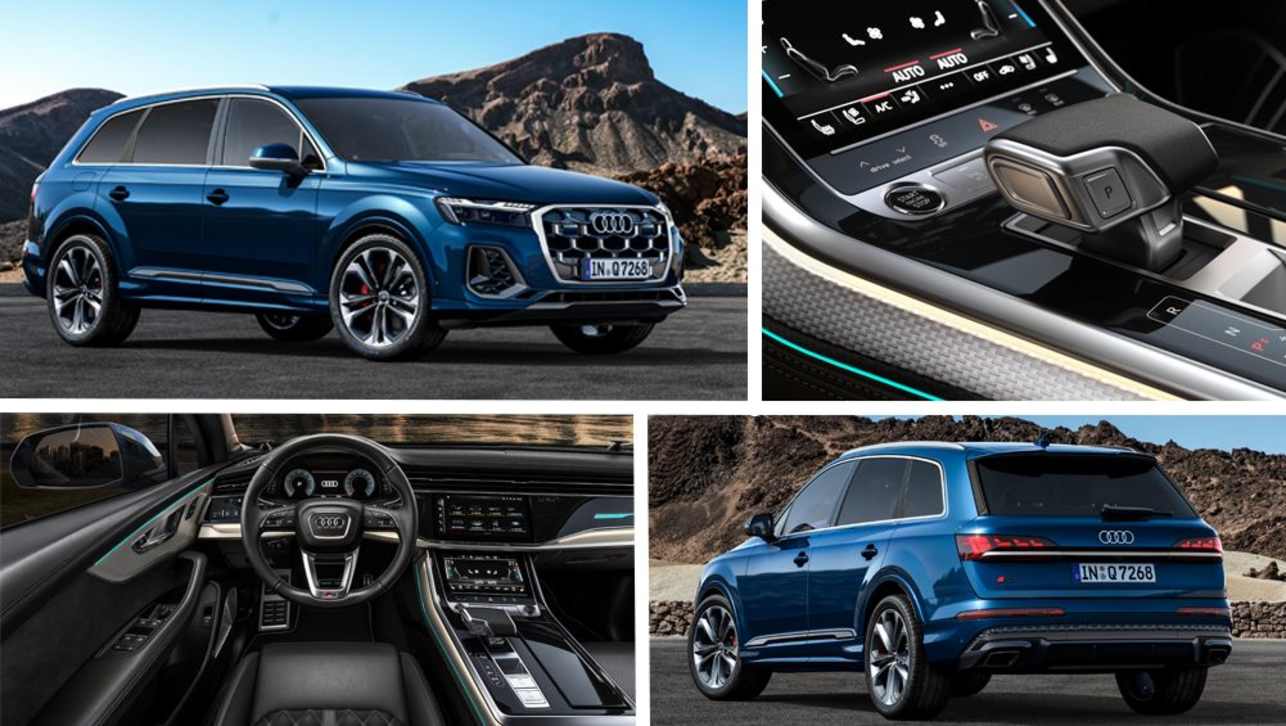An electric compressor aids turbos in SQ7 for earthmoving torque, writes John Carey.
Audi's Ventolin for V8s can make any engine breathe better. Its new SQ7 TDI is the first production car with an electric puffer to boost performance but won't be the last.
The electric-powered compressor (EPC, as Audi calls it) of the 4.0-litre V8 diesel in the SQ7 blows a blast of air into its lungs at idle even before the first of its two conventional turbochargers kicks in.
Once the engine is revving and the exhaust-driven turbos have spun up to speed, the compressor shuts down until needed again.
The idea? To kill turbo lag — the pause between pressing the pedal and feeling the engine respond — and to give this high-performance version of the SUV outstanding off-the-line acceleration.
It'll work just as well with any size engine with any number of cylinders, according to Audi technical development director Stefan Knirsch.
"It is applicable for petrol and diesel engines," he adds.
The engineer also hints Audi will use EPC tech on other engines in future models.
Audi will use the EPC only in high-performance models such as the SQ7, where it's sure to win fans.
"We have already checked this technology also with petrol engines, with good success," he says. "Something may follow in future, of course, once we develop such technology."
It could also work especially well with Audi's growing line-up of plug-in hybrid electric vehicles. "It may make sense to put (this technology) also on PHEV vehicles."
Initially, Audi will use the EPC only in high-performance models such as the SQ7, where it's sure to win fans.
The 4.0 TDI's peak power figure of 320kW is big, that's for sure. Even more important is the way it instantly develops a fat wave of torque right from idle — try 900Nm from 1000rpm.
Audi claims the SQ7 will surge from 0-100km/h in 4.8 seconds, the kind of snappy response you expect from a very sporty car, not a high, wide and hefty SUV.
CarsGuide tried an Audi sedan with a prototype EPC engine in 2012 and its shove in the back was astonishing. So there's no reason to suspect Audi is fibbing about the SQ7's performance.
The SQ7 will have active front and rear anti-roll bar technology, which should give the big Audi a little agility to go with its straight-line speed. The roll bars are electric and draw from the same 48-volt battery as the compressor.
The SQ7 is scheduled to arrive in Australia in about five months, priced about $180,000.
How does it work?
Audi's EPC (electric-powered compressor) is a blower just like that found in a turbocharger but it's driven by a 7kW motor instead of engine exhaust gas. Exhaust-driven turbos deliver only a little extra power-boosting air to an engine at idle — EPC can blow a gale. In the 4.0 TDI of the SQ7, the meagre airflow from the engine's first turbo is momentarily blocked and the EPC gives a big puff in its place. Once its work is done, an inlet valve flips to block the EPC and open the way for air from the first turbo. The engine's second turbo kicks in at about 2000rpm, Audi engineers say.





.jpg)
.jpg)



.jpg)
.jpg)
.jpg)
.jpg)
.jpg)
.jpg)
.jpg)
.jpg)
.jpg)
.jpg)
.jpg)


.jpg)

.jpg)
.jpg)
.jpg)

.jpg)
.jpg)

.jpg)




Comments